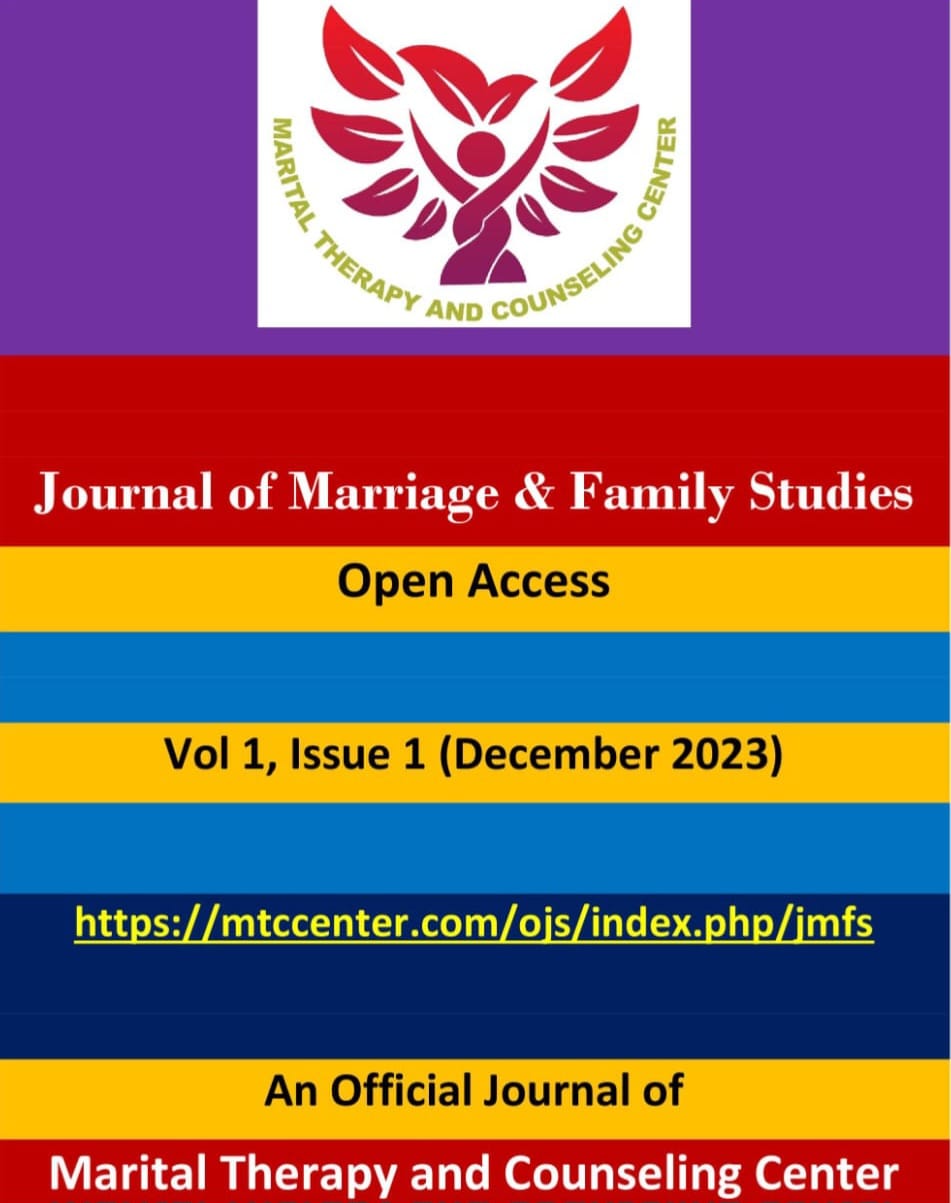Emotional Regulation and Intimate Relationship in Newly Married Couple
Keywords:
Emotional Regulation, Intimate Relationship, Newly Married CouplesAbstract
Perhaps the most significant relationships that people form in their adult life are intimate ones. Intimate relationship quality directly affects one's physical and mental well-being as well as emotional regulation in general. The aim of the present study was to examine the relationship between emotional regulation and intimate relationship in newly married couples. Data was collected from 344 respondents of married couples by using quantitative and survey research method. For this study, purposive sampling technique was used. The age ranges from 18-40 (SD=0.76). The questionnaires used in the study were Emotional Regulation Questionnaire and Relationship Assessment Scale. Results revealed that there was a significant impact of emotional regulation on intimate relationship among newly married couples. To conclude, results illustrated that emotional regulation positively correlated with intimate relationship and the emotional regulation plays important role to develop relationship in newly married couple. Strong emotional control abilities are indicative of secure attachment styles, which are associated with more stable and satisfying relationships and later on marital success.
Downloads
Downloads
Published
Data Availability Statement
The datasets of the current study are not available publicly due to ethical reasons but are available from the corresponding author [A.A.] upon the reasonable request.
Issue
Section
Categories
License
Copyright (c) 2023 Anosha Ahmed, Ruqia Safdar Bajwa, Adeena Rasheed

This work is licensed under a Creative Commons Attribution-NonCommercial 4.0 International License.
Creative Commons Attribution-Non Commercial 4.0 International (CC BY-NC 4.0) License: The articles in Journal of Marriage & Family Studies are distributed under the terms of the Creative Commons Attribution Non-Commercial 4.0 International (CC BY-NC 4.0) License (https://www.creativecommons.org/licenses/by-nc/4.0/) which permits non-Commercial use, reproduction and distribution of the work without further permission provided the original work is attributed as specified on the Journal website at https://mtccenter.com/ojs/index.php/jmfs





